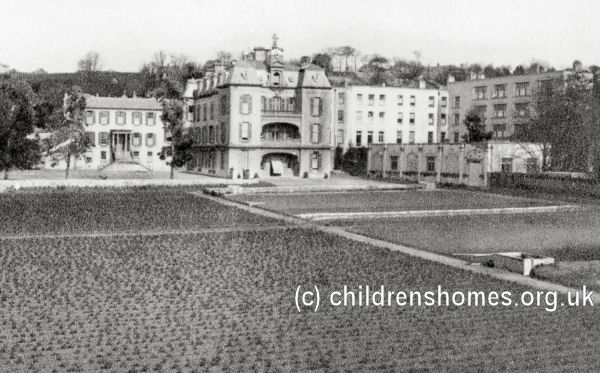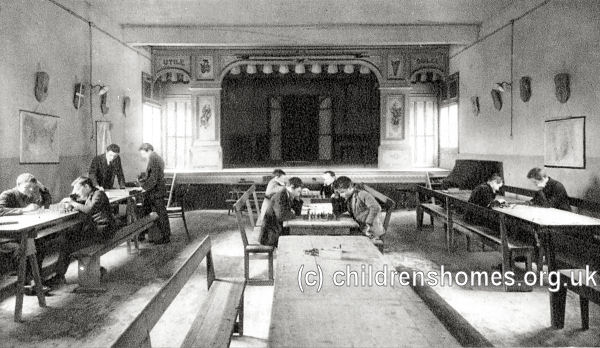Sacré Coeur Orphanage, St Helier, Jersey, Channel Isles
The Sacré Coeur Orphanage (Orphelinat Sacré Coeur) for Roman Catholic children was founded in 1901 by Father Leon Le Grand. The orphanage initially occupied a building on Midvale Road, St Helier, and was run by sisters of the Congregation de la Sainte-Famille d'Amiens. The accommodation quickly proved to be too small and the following year a property known as Summerland House was purchased on the Rouge Bouillon, St Helier. A large new building to house the children was erected next to the original house, which was then used as a convent for the nuns. An adjacent property, known as St Mary's House, was also acquired in which to accommodate the older boys. By 1904, there were 78 primary-school-age children and 13 babies living at the institution under the care of nine Sisters.
The older boys at the orphanage were taught horticultural and gardening skills and either worked in the orphanage's extensive grounds or were as apprentices in in the local area. The girls received instruction in housekeeping, sewing and knitting and in 1905, a textile/knitwear 'ouvroir' or workshop was opened in an adjacent building where the older girls worked. In partnership with a local tailor, Louis Jules Sangan, the enterprise developed into a commercial operation, trading as the Summerland Manufacturing Company, and employing additional workers from outside the orphanage. Following Germany's invasion of the island in July 1940, the factory was closed after its manager, Robert Sangan, was arrested for his refusal to manufacture German army uniforms. He was released soon afterwards, however, and the factory was taken over by the States of Jersey to produce clothing and footwear for the island, including clogs.
A further addition to the Sacré Coeur site in 1912 was the Juniorat Saint Joseph, a juniorate or seminary for young men preparing for the priesthood.

Sacré Coeur Convent (left), Orphanage (centre) and St Joseph Juniorat (right), St Helier, Jersey, c.1912. © Peter Higginbotham

Sacré Coeur Orphanage (left) and St Joseph Juniorat (right), St Helier, Jersey, c.1912. © Peter Higginbotham

St Joseph Juniorat recreation/meeting room, St Helier, Jersey, c.1912. © Peter Higginbotham
In May 1958, there were 66 children at the Sacré Coeur, who were a mixture of children placed privately and a small number who were in care, for whom the orphanage received a boarding-out allowance. The provision of full-time care at the establishment is believed to have ceased in around 1972 although a day-nursey, opened in the 1960s, continued in operation until 1996. The orphanage buildings still exist, now in prvate ownership.
Records
Note: many repositories impose a closure period of up to 100 years for records identifying individuals. Before travelling a long distance, always check that the records you want to consult will be available.
- The Jersey Archive, Clarence Road, St Helier, JE2 4JY.
Bibliography
- Higginbotham, Peter Children's Homes: A History of Institutional Care for Britain s Young (2017, Pen & Sword)
Links
Except where indicated, this page () © Peter Higginbotham. Contents may not be reproduced without permission.


